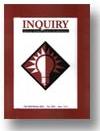The use of critical thinking requires one to understand how to comprehend an argument. Part of this comprehension includes the ability to recognize a logical fallacy in an argument. The understanding of logical fallacies will help one become a better critical thinker by enabling them to break apart an argument from an opponent and debate the argument by pointing out the flaws. In this paper three logical fallacies will be discussed: the false analogy, begging the question, and hasty generalization.
One must understand what an argument is and how it is constructed to understand when and why a logical fallacy is used. According to Bassham, Irwin, Nardone, and Wallace (2002), "arguments are composed of one or more premises and a conclusion. Premises are statements that are claimed to provide evidence for another statement, the conclusion. The conclusion is the statement that the premises are claimed to prove or support" (p.
25). When an argument has flawed logic it would be considered to have a logical fallacy. The use of a logical fallacy might distract someone from understanding the true issue of an argument, or it might be used because the arguer has an imperfect argument.
There are two main types of arguments: deductive and inductive. A deductive argument is an argument such that the premises provide (or appear to provide) complete support for the conclusion. An inductive argument is an argument such that the premises provide (or appear to provide) some degree of support (but less than complete support) for the conclusion. If the premises actually provide the required degree of support for the conclusion, then the argument is a good one. A good deductive argument is known as a valid argument and is such that if all its premises are true, then its conclusion must be true. If all...


